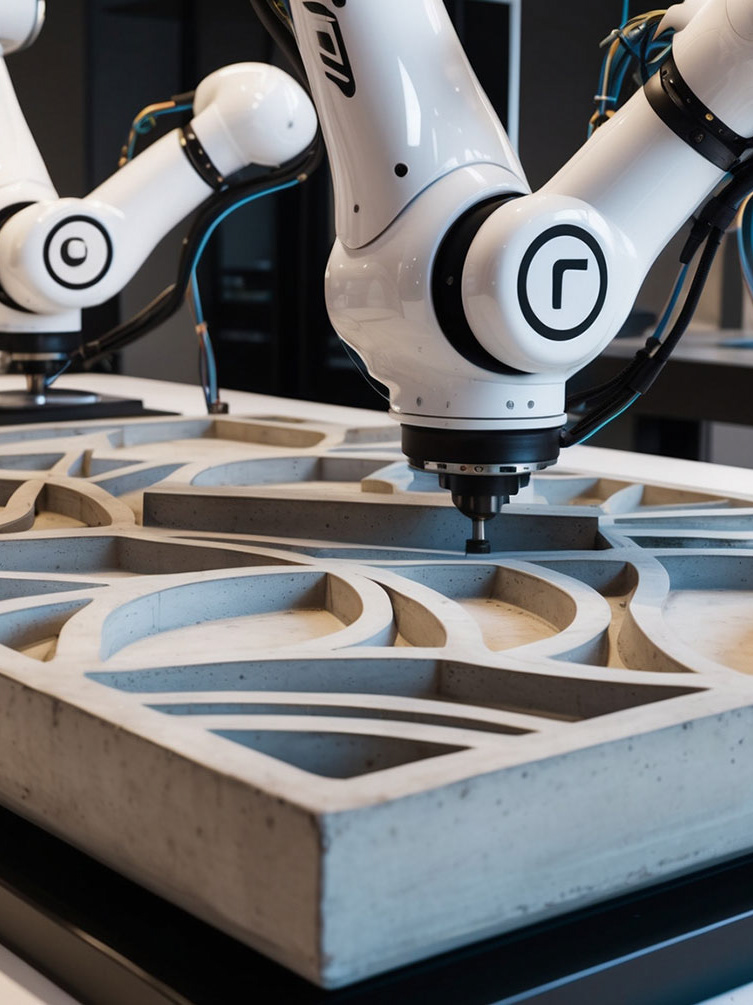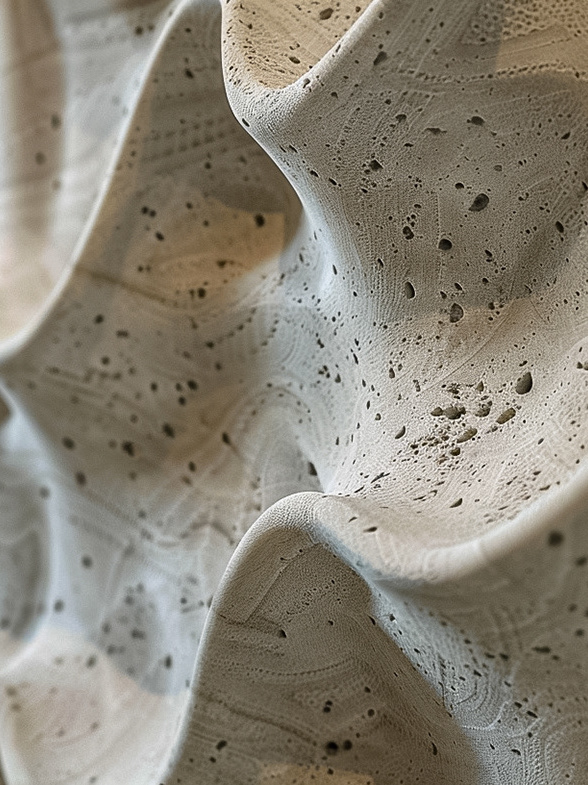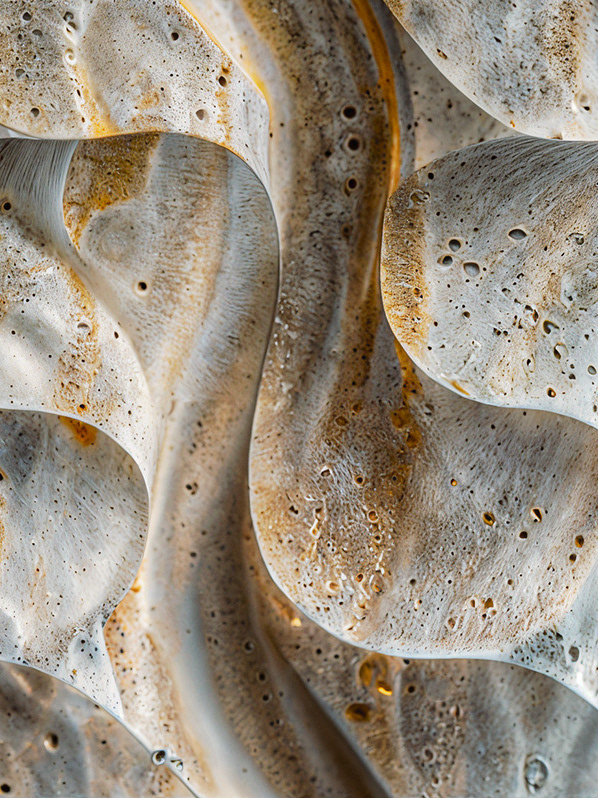Definition of decorative concrete finishes and concrete wall panels
Decorative concrete finishes are special techniques used to add texture, colour, and pattern to concrete surfaces. These finishes are applied to existing concrete surfaces and are used to enhance the appearance and functionality of the concrete. Examples of decorative concrete finishes include stamped concrete, stained concrete, polished concrete, exposed aggregate, and coloured and textured overlays.
Concrete wall panels, on the other hand, are pre-formed panels made of concrete that are used to create vertical surfaces. These panels can be used in a variety of applications, such as exterior walls, partition walls, and ceilings. They are often made using precast concrete, insulated concrete, or glass fibre reinforced concrete, and offer several benefits, including durability, strength, low maintenance, and energy efficiency.
Moulded lightweight decorative concrete panels are a type of decorative concrete finish that is created using a moulding process. These panels are made by casting a mixture of concrete and other materials, such as fly ash or foam, into a mould. The result is a lightweight panel that has the appearance and texture of traditional concrete, but is much lighter and easier to install.
Moulded lightweight decorative concrete panels are often used in interior design, as they can be easily mounted on walls or used as floor tiles. They can also be used to create countertops, backsplashes, and other decorative surfaces. One of the main advantages of moulded panels is their versatility in design. They can be moulded into a wide range of shapes and sizes, and can be finished with a variety of textures and colours to suit the desired aesthetic.
In addition to their decorative use, moulded lightweight decorative concrete panels also offer several practical benefits. They are durable, low maintenance, and resistant to stains and wear. They are also easy to install and can be easily cut or shaped on site. Overall, moulded concrete panels are a popular choice for those looking to add a unique and durable decorative element to their construction or design project.
Benefits of using decorative concrete finishes and concrete wall panels in construction and design
Durability: Both decorative concrete finishes and concrete wall panels are highly durable and resistant to wear and tear, making them a long-lasting choice for construction and design projects.
Low maintenance: Decorative concrete finishes and concrete wall panels require minimal maintenance, making them an easy and cost-effective choice for homeowners and business owners.
Energy efficiency: Insulated concrete panels, in particular, offer excellent energy efficiency, as they help to regulate indoor temperatures and reduce energy costs.
Versatility in design: Decorative concrete finishes and concrete wall panels can be customized to suit a wide range of design styles and aesthetics, making them a versatile choice for any project.
Cost-effectiveness: In addition to their low maintenance costs, decorative concrete finishes and concrete wall panels can also be more cost-effective than other materials, such as natural stone or brick.
Environmentally friendly: Both decorative concrete finishes and concrete wall panels can be made using recycled materials, making them an environmentally friendly choice for construction and design projects.
Types of decorative concrete finishes
Stamped concrete
Stamped concrete is a type of decorative concrete finish that involves creating a pattern or texture on the surface of the concrete using a stamping process. The process begins with the placement of fresh concrete, which is then textured using a series of rubber stamps that are pressed into the surface of the wet concrete. The stamps are typically made of rubber or polyurethane and are shaped to create a variety of patterns, such as brick, stone, wood, or tile.
After the stamps have been pressed into the concrete, the surface is usually colored using a liquid or powder coloring agent. The coloring agent is applied to the surface of the concrete and is worked into the stamped pattern to create a more realistic and cohesive look.
Stamped concrete is a popular choice for outdoor surfaces such as driveways, patios, and walkways, as it can provide the look of natural stone or other materials at a lower cost. It is also durable and low maintenance, making it a practical choice for both residential and commercial projects.
Stained concrete
Stained concrete is a type of decorative concrete finish that involves adding color to the surface of the concrete using a chemical staining process. The process begins with the application of a water-based or acid-based staining agent to the surface of the concrete. The staining agent reacts with the concrete, causing a chemical reaction that results in a permanent color change.
Stained concrete is a popular choice for both indoor and outdoor surfaces, such as floors, countertops, and patios. It is a versatile option that can be used to create a wide range of looks, from subtle, earthy tones to bold, vibrant colors. It is also low maintenance and easy to clean, making it a practical choice for both residential and commercial projects.
One of the main advantages of stained concrete is that it allows for a more natural, organic look compared to other decorative concrete finishes. It can also be used to accentuate the texture and pattern of the concrete, creating a unique and visually striking surface.
Polished concrete
Polished concrete is a type of decorative concrete finish that involves grinding and polishing the surface of the concrete to create a smooth, shiny finish. The process begins with the use of a floor grinder, which is used to remove any imperfections or roughness on the surface of the concrete. The grinder is equipped with diamond abrasives, which are used to grind the concrete down to a smooth, even finish.
After the concrete has been ground down, it is polished using a series of progressively finer grit diamond abrasives. The process is similar to sanding wood, with the grit starting at a coarser level and gradually becoming finer. The result is a glossy, reflective finish that is both visually appealing and durable.
Polished concrete is a popular choice for both residential and commercial projects, as it is low maintenance and easy to clean. It is also resistant to stains and wear, making it a practical choice for high-traffic areas. In addition to its functional benefits, polished concrete is also a stylish choice that can add a modern, industrial look to a space.
Exposed Aggregate concrete finish
Exposed aggregate concrete is a type of decorative concrete finish that involves exposing the aggregate (small stones or gravel) in the concrete surface. The process begins with the placement of fresh concrete, which is then covered with a thin layer of cement paste. Once the paste has hardened, it is removed using a pressure washer or other method, revealing the aggregate beneath the surface.
Exposed aggregate concrete is a popular choice for outdoor surfaces, such as driveways, patios, and walkways, as it adds texture and visual interest to the surface. It is also durable and low maintenance, making it a practical choice for both residential and commercial projects.
One of the main advantages of exposed aggregate concrete is that it allows for a wide range of design possibilities. The aggregate used in the concrete can be chosen to match the desired color and style of the project, and the amount of aggregate exposed can be varied to create different looks. Exposed aggregate concrete can also be finished with a variety of treatments, such as acid washing or sandblasting, to further enhance its appearance.
Coloured and textured overlays
Coloured and textured overlays are a type of decorative concrete finish that involves the application of a thin layer of material over the surface of the concrete. The material used in the overlay can be either cement-based or polymer-based, and is typically applied using a trowel or other tool.
Coloured and textured overlays are used to add colour, pattern, and texture to the surface of the concrete, and can be used to create a wide range of looks. The overlay material can be coloured using a variety of methods, such as the addition of pigments or the use of dyes, and can be finished with a variety of textures, such as smooth, brushed, or stamped.
Coloured and textured overlays are a popular choice for both residential and commercial projects, as they are durable, low maintenance, and easy to install. They are also a cost-effective alternative to other decorative concrete finishes, such as stamped concrete or acid staining. Coloured and textured overlays can be used on a variety of surfaces, including floors, countertops, and outdoor features.
Types of concrete wall panels
There are several types of concrete wall panels, including:
Precast concrete panels: Precast concrete panels are made offsite and then transported to the construction site for installation. They are typically made using a moulding process, and are used to create a variety of vertical surfaces, such as exterior walls, partition walls, and ceilings. Precast concrete panels are a popular choice due to their durability, strength, and low maintenance.
Insulated concrete panels: Insulated concrete panels (ICPs) are made of concrete that is sandwiched between two layers of insulation. They are used to create exterior walls, and are known for their energy efficiency and ability to regulate indoor temperatures. ICPs are also durable and low maintenance, making them a practical choice for both residential and commercial projects.
Glass fibre reinforced concrete panels (GFRC): GFRC panels are made using a mixture of concrete and glass fibre reinforcement. They are lightweight and strong, and are often used as cladding or as a finishing material for both interior and exterior walls. GFRC panels offer a variety of design possibilities, and are known for their durability and low maintenance.
Decorative concrete wall panels: moulded from composite materials and reinforced with fibreglass. Decorative concrete panels are lighter then traditional precast concrete but heavier and thicker than GFRC panels. They're not structural and only have decorative function with almost unlimited choices of designs and concrete finishes.
In addition to these types of concrete wall panels, there are also other options available, such as tilt-up concrete panels and sandwich panels. These panels offer similar benefits to precast, insulated, and GFRC panels, and can be used in a variety of construction and design projects.
Advantages of using concrete wall panels
There are several advantages to using concrete wall panels in construction and design, including:
Durability: Concrete wall panels are highly durable and resistant to wear and tear, making them a long-lasting choice for construction projects.
2. Low maintenance: Concrete wall panels require minimal maintenance, making them an easy and cost-effective choice for homeowners and business owners.
3. Energy efficiency: Insulated concrete panels, in particular, offer excellent energy efficiency, as they help to regulate indoor temperatures and reduce energy costs.
4. Versatility in design: Concrete wall panels can be customized to suit a wide range of design styles and aesthetics, making them a versatile choice for any project.
5. Cost-effectiveness: Concrete wall panels can be more cost-effective than other materials, such as brick or natural stone, particularly in large construction projects.
6. Environmentally friendly: Concrete wall panels can be made using recycled materials, making them an environmentally friendly choice for construction and design projects.


